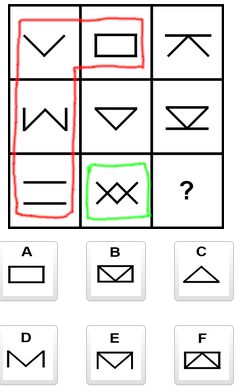I am thinking about this question:
The public solution is
D
But I think I have another working solution, but I wasn't able to find any validation.
I think it's
A
The red marked fields added up build the green field. So the whole pattern looks basically like a C. And when we use this pattern to get?.
We end up in A.
Did I miss anything or is this also a valid solution?



